Effective tracking of performances and managing finances are essential for the long-term success of any business. While we are familiar with the calendar year, we also know that businesses always operate on a fiscal year that can differ from one country to another. Understanding and setting up a Fiscal Year in Zoho CRM is crucial for accurate financial reporting and strategic planning. Zoho CRM offers the flexibility to customize your fiscal year to align with your business needs, ensuring that your financial and reporting schedules are perfectly synchronized.
In this blog, we’ll explore the importance of setting up a fiscal year in Zoho CRM, guiding you through the process to ensure your financial tracking and reporting align seamlessly with your business needs.
A fiscal year in Zoho CRM is a 12-month period that organizations use for financial planning, reporting, and budgeting. This does not always necessarily align with the calendar year. This period can start on any month and allows businesses to tailor their financial schedules according to their operational needs or industry standards. By defining a fiscal year in Zoho CRM, companies can ensure that their sales forecasts, budgets, and performance metrics are accurately tracked and analyzed, facilitating more informed decision-making and strategic planning. This customization plays a critical role in streamlining financial activities with overall business goals.
For example, a retail business that operates from India will have its fiscal year starting in April and ending in March. Similarly, another business operating from the United States may choose to end its fiscal year in December and start in January. This flexibility enables organizations to tailor their financial reporting to their unique cycles, resulting in more accurate insights and strategic decision-making.
Setting up the fiscal year in Zoho CRM is a straightforward process and can be done in a few simple steps:
In your Zoho CRM click on the setup icon. From the General options select Company Settings and click on Fiscal Year.
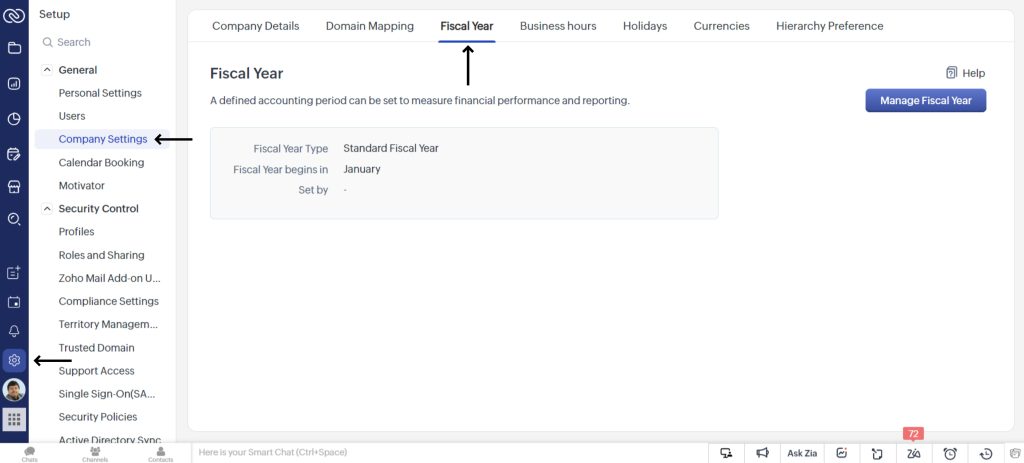
Next, you click on the Manage Fiscal Year button to set it up.
You can set up the standard fiscal year on your Manage Fiscal Year page. From the drop down options select the required month to begin with.
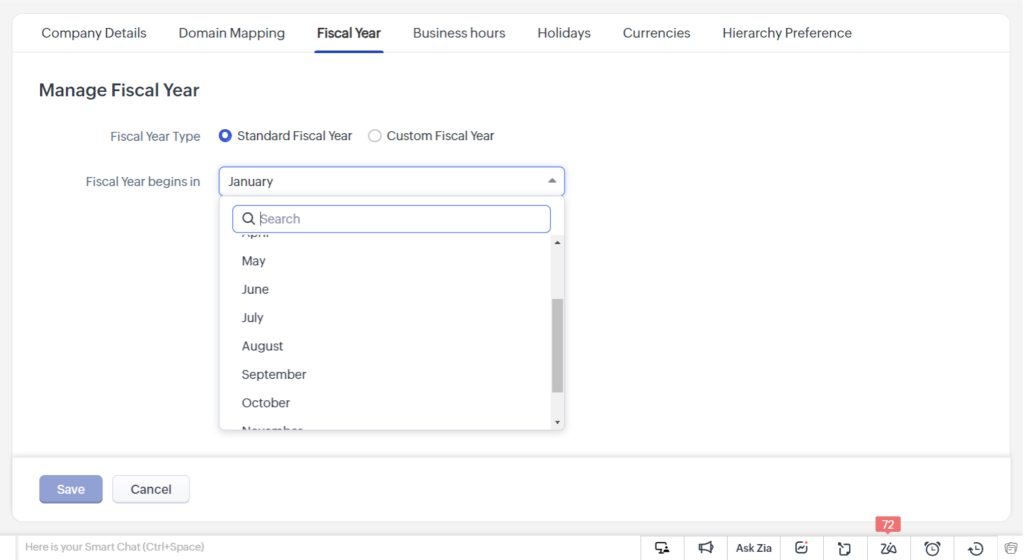
If your fiscal year begins in any month other than January, then you need to define whether you are displaying the fiscal year based on the starting year or the ending year.
Click on Save and you will have successfully set up the fiscal year in Zoho CRM.
Apart from the standard fiscal year in Zoho CRM, you can also set up a customized calendar for the same purpose. A custom fiscal year allows organizations to tailor their financial reporting periods to align better with their operational needs. You no longer need to rely on the standard calendar year. This flexibility is useful for businesses with unique sales cycles or seasonal patterns.
To set up a custom fiscal year, select the desired format. You will mainly find 2 types of formats to choose from with different variations i.e. Quarter Based and Year Based.
Quarter Based Format– Each quarter consists of 13 weeks, divided into three periods. The specific distribution of weeks defines the format—4-4-5 has four weeks in the first two periods and five in the last, while 4-5-4 has four weeks in the first, five in the second, and four in the last, and 5-4-4 reverses this.
Year Based Format– Each period in these formats consists of four weeks, totaling 13 periods per fiscal year. The distribution of these periods across four quarters varies—3-3-3-4 has three periods in the first three quarters and four in the last, while others adjust this distribution accordingly.
Once you have selected the format, choose the Start Date of the month you want your fiscal year to start.
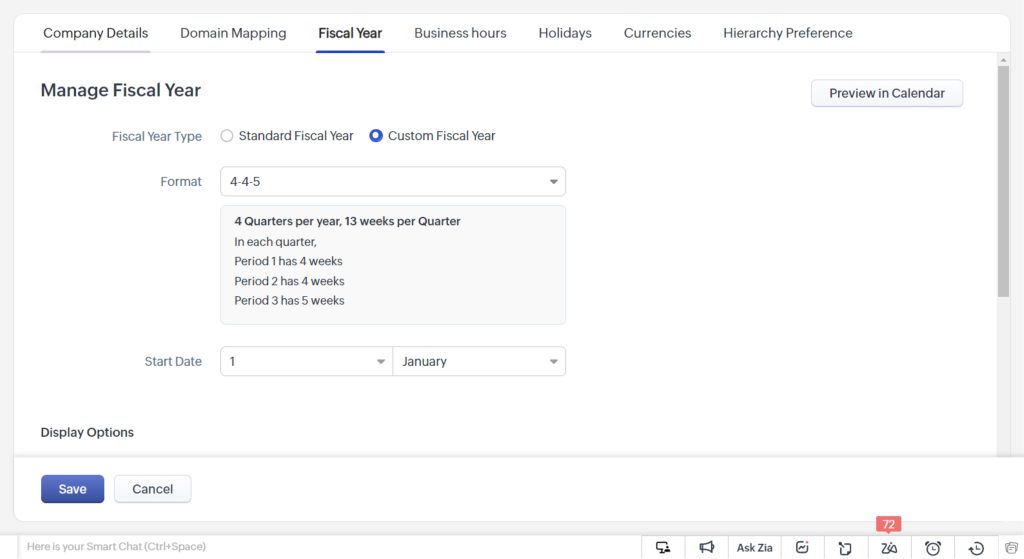
Next, you set up the display options as to how you want your fiscal year to show up and select whether it should be based on starting year or ending year.
From the Period Display option, select your yearly or quarterly display preferences.
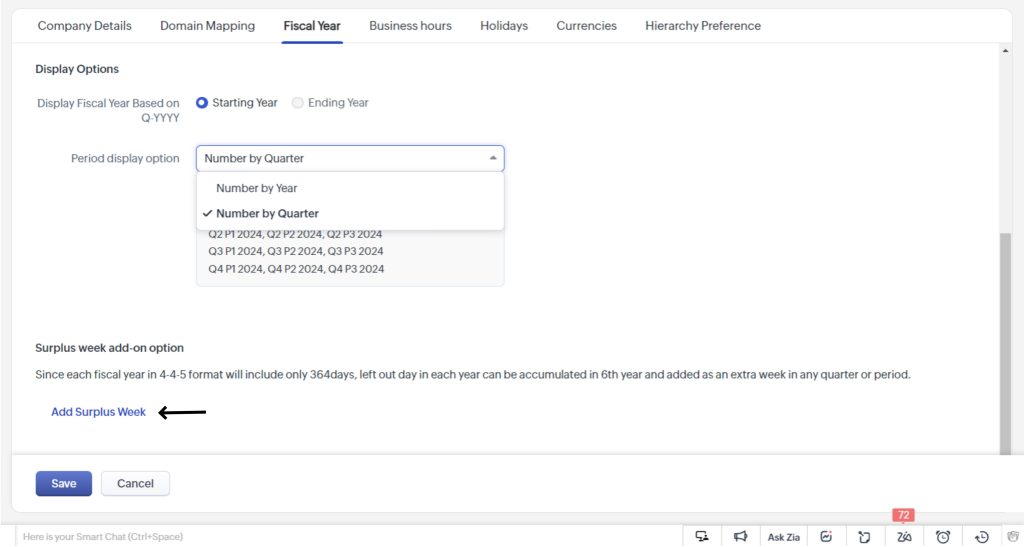
Click on Save and you are all set. You can also preview the calendar by clicking on the Preview in Calander on the screen.
Since these fiscal formats split the year into 52 weeks/364 days, a discrepancy of one day occurs each year, plus an extra day in leap years. To address this, you might need to add a surplus week to a financial period. For example, if you want your fiscal year to start on the first Monday of April, incorporating an extra week in a future period can help you stay aligned.
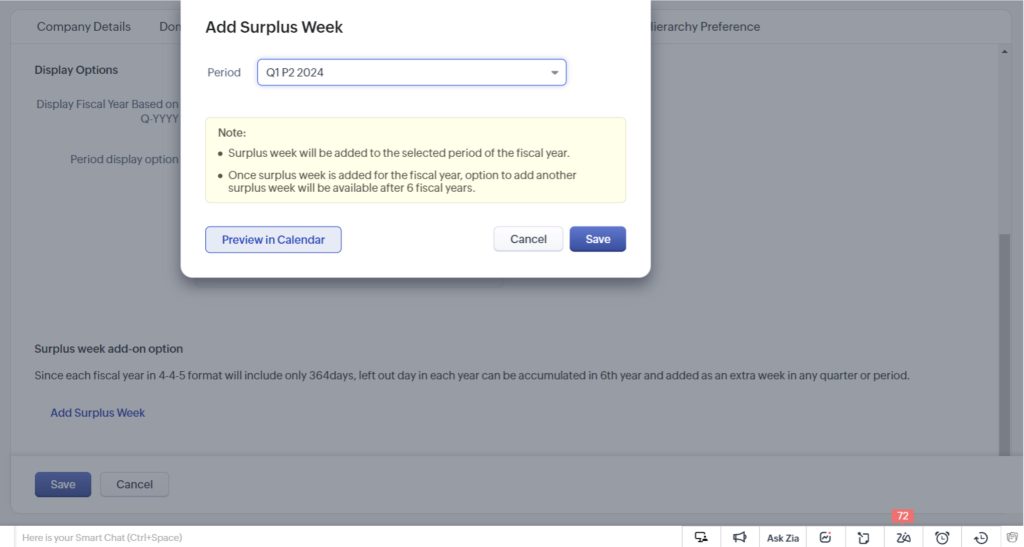
Setting up a fiscal year in Zoho CRM is crucial for accurate financial tracking and strategic planning. By customizing your fiscal year, you align financial reporting and your unique business cycles. This is an efficient way to visualize sales forecasts and budgets. This flexibility allows businesses to respond effectively to seasonal patterns and operational needs, leading to better decision-making and improved financial health.
It’s fair to say that taking the time to establish a tailored fiscal year in Zoho CRM not only streamlines your financial processes but also empowers your organization with informed strategic choices. So are you ready to optimize your financial planning? Set up your fiscal year in Zoho CRM today and unlock the potential for greater business success! Here are our experts to help you know more